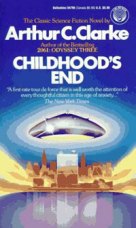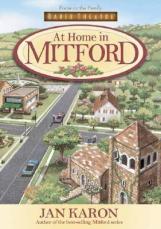 Childhood’s End by Arthur C. Clarke
Childhood’s End by Arthur C. Clarke
A single brilliant star glowed in the center of the screen: no one could have told, from this distance, that the sun had ever possessed planets or that one of them had been lost.
p. 218 Ballantine Books 1991
In Childhood’s End, Clarke kills off the human race and wipes out Earth.
First, he has disappear all human individuality, he asserts that Man has no place in the stars, and he gives us up to an inevitable evolutionary leap in mental prowess.
Clarke makes some problematic leaps in telling the narrative of the last generation: People will be corralled into a stagnation of peace. They will let go of all creativity. They will lose the will to live once their children are gone.
Secondly, Man will give up space exploration as an unnecessary science, because a far superior technology exists that we could never rival and because there is so much still to be discovered here on Earth after all. (This is particularly striking to me at this time considering that the US’s last manned space flight took off this week. What would Clarke think of that?) To compound this assertion, when one traveler stows away Jonah in the whale style to the world of the Overlords, he struggles to deal with a few months in the new environment and is cowed, also contending that Man could not deal with what he would find or the enormity of the universe.
The build-up of the novel is that mankind is ready to take the evolutionary leap to lose all self and merge suddenly psychic minds into the Overmind, like the essence of the universe and his answer to religiosity and the Armageddon. He mixes end-of-the-world myth with paranormal as a grand explanation. Let me note that I did like the gimmick of why mankind has a deep and lingering concept of the devil. (Not going to say more and ruin that one for you.)
For historical context, the feelings of post-WWII and the beginning of the Cold War weigh heavily on Clarke’s creation of a Utopia on Earth after the Overlords arrive, with lingerings on themes such as total war, and on the exercise of their power mostly through psychological maneuvering.
This is science fiction, but asking the reader to suspend their disbelief that the evolutionary leap to a mind power could happen in one generation and could be the same across life forms in the universe is preposterous. Individuality is overrated, as declared by his comments on the final punch, when the children lose their physical forms and go to join the Overmind. He makes the comparison to the individual parts making the mass in a colony of bacteria, or organs operating in a body, which I actually ascribe to. Imagine all the working parts on this Earth, interacting and living and making up the history of humanity. But important in that, and a theme in many works, is the human element both of unpredictability and of ingenuity. One cannot minimize these in any telling of humans as a collective entity.
I find these three ways of killing off the Earth objectionable and annoying.
But check the inside cover.
The opinions expressed in this book are not those of the author.
Thanks Mr. Arthur C. Clarke, but even if it is all in satire, I would contend that it did not adequately convey that. As a whole the novel is not focused enough to be gripping or compelling in theme. There is mismatched pacing; the first portion is inordinately long compared to all that could be developed around the last part, such as when Jan returns or when George and Jean start their new life on Athens. If you want to read in my opinion a better example of what Clarke is capable of, pick up Against the Fall of Night or Rendezvous with Rama.
But I am glad that Clarke does not believe in his heart that Man has no place in the stars.











 Adele Geras
Adele Geras







 by Suzanne Collins
by Suzanne Collins by Sook Nyul Choi
by Sook Nyul Choi by Alduous Huxley
by Alduous Huxley

